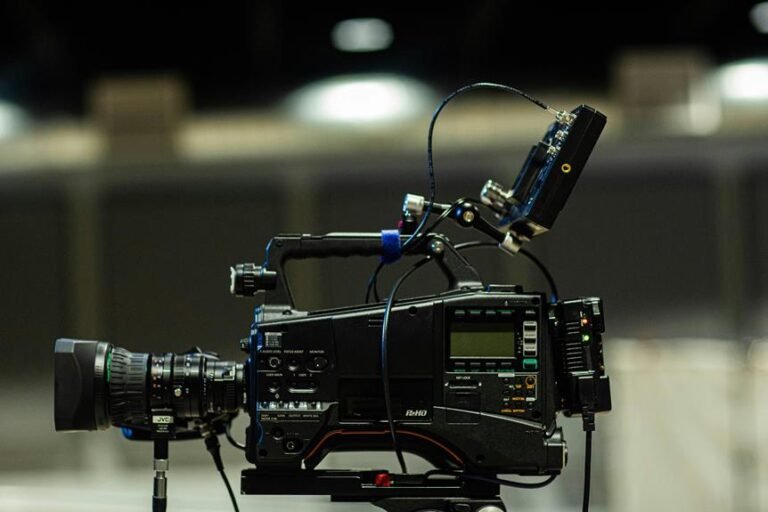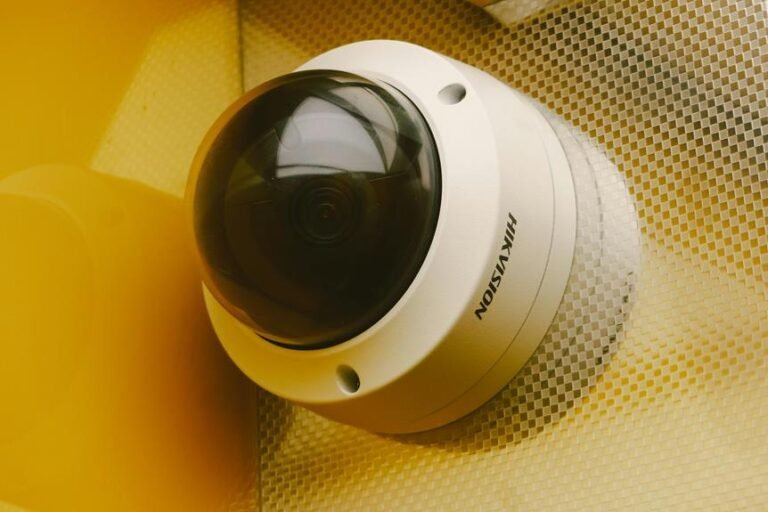How to Connect Geeni Camera to Wifi: Simple Steps for Geeni Camera Setup
To connect your Geeni camera to Wi-Fi, start by ensuring a strong network signal in the camera's range. Open the Geeni app, tap (+), select 'Camera,' and scan the QR code on your camera. Follow on-screen instructions for setup. Troubleshoot any issues with Geeni's tips and set a secure password for camera safety. Test signal strength and adjust positioning if needed. Explore advanced settings for best performance. Prioritize security during setup for peace of mind. Secure a seamless connection for effective monitoring. Additional steps await to enhance your Geeni camera experience.
A Quick Overview
- Check Geeni camera compatibility with Wi-Fi network.
- Ensure strong Wi-Fi signal at camera location.
- Download Geeni App from App Store or Google Play.
- Connect camera to power source securely.
- Follow app prompts to connect camera to Wi-Fi.
Requirements for Geeni Camera Setup
To successfully set up your Geeni camera, make certain that you have the necessary requirements in place.
Confirm that your Geeni camera is compatible with your Wi-Fi network. Troubleshooting connection issues may arise if the camera isn't compatible.
Verify that your Wi-Fi signal is strong where you plan to install the camera.
Having these prerequisites sorted will streamline the setup process and guarantee a smooth connection to your Wi-Fi network.
Unboxing Your Geeni Camera
Upon receiving your Geeni camera, the first step is to carefully unbox it to access its components and prepare for the setup process. Inside the box, you'll find the camera, power adapter, mounting kit, and user manual.
Before setting up your Geeni camera, consider ideal camera placement suggestions such as mounting it on a wall for a wider view or placing it on a shelf for a specific area coverage.
Powering Up the Geeni Camera
When setting up your Geeni camera, make sure to connect it to a power source using the provided power adapter. This step is essential for the camera to function properly.
If you encounter any issues with powering up the camera, make sure that the power adapter is securely plugged into both the camera and the outlet. Troubleshooting issues related to power can help in setting up your Geeni camera smoothly.
Installing the Geeni App
Now, let's seamlessly shift our focus to the next step by getting the Geeni App installed on your device.
To start setting up your Geeni camera, head to the App Store or Google Play Store and search for 'Geeni.' Once installed, open the app and follow the prompts to create an account.
If you encounter any troubleshooting connection issues during installation, make sure your device has a stable internet connection.
Adding the Geeni Camera to the App
To add the Geeni Camera to the app, make sure that the camera is powered on and within range of your Wi-Fi network. Once ready, follow these steps:
- Open the Geeni app on your smartphone.
- Tap on the (+) icon to add a new device.
- Select 'Camera' from the list of devices.
- Scan the QR code on the camera.
- Follow the on-screen instructions to complete the setup.
For troubleshooting tips or remote access, refer to the app's help section.
Connecting Geeni Camera to Wi-Fi
After successfully adding your Geeni Camera to the app, the next step involves connecting it to your Wi-Fi network.
To do this, make sure your Wi-Fi is stable and within range. Follow the app's instructions for connecting the camera to your network.
If you encounter any issues during the setup, refer to troubleshooting tips provided by Geeni.
Remember to prioritize security measures by setting up a strong password for your camera.
Testing the Camera Connection
When performing the camera connection test, make sure that the live feed appears clear and uninterrupted.
- Check Signal Strength: Guarantee a strong Wi-Fi signal near the camera.
- Reboot Camera: Reset the camera by turning it off and on.
- Verify Network Settings: Confirm correct Wi-Fi network and password.
- Positioning Adjustment: Move the camera closer to the router.
- Update Firmware: Make sure the camera has the latest software for best performance.
Remember these troubleshooting tips for connectivity issues.
Adjusting Geeni Camera Settings
If your Geeni camera connection test was successful, now it's time to adjust the camera settings for best performance.
To optimize your camera, explore advanced features like motion detection sensitivity and night vision settings.
Troubleshooting tips can help resolve any issues that may arise during the setup process.
Frequently Asked Questions
Can Geeni Cameras Be Connected to a 5GHZ Wi-Fi Network?
Yes, Geeni cameras can connect to a 5GHz Wi-Fi network. This network compatibility guarantees faster data transfer speeds, but be mindful of potential interference. Confirm your signal strength is sufficient for reliable connectivity to optimize performance.
How Can I Troubleshoot if My Geeni Camera Keeps Disconnecting?
Experiencing trouble with your Geeni camera disconnecting? Troubleshooting tips can help. Check signal strength and camera placement. Confirm proximity to the router and no interference. Restart the camera and router if needed for better connectivity.
Is It Possible to Access Geeni Cameras Remotely From a Different Location?
Yes, you can access Geeni cameras remotely from a different location for convenient remote monitoring. Make sure to implement proper security settings to address any concerns about unauthorized access and protect your privacy and data.
Can Multiple Geeni Cameras Be Set up on the Same Geeni Account?
Yes, you can set up multiple Geeni cameras on the same account. This allows convenient access to all cameras in one place. Guarantee privacy by setting unique camera names and leveraging Geeni's robust security features for peace of mind.
What Is the Maximum Distance for a Stable Wi-Fi Connection for Geeni Cameras?
For a stable Wi-Fi connection with your Geeni cameras, consider signal strength and interference. The maximum distance varies based on connection range and obstacles like walls. Ideal placement and signal boosters can enhance connectivity.







